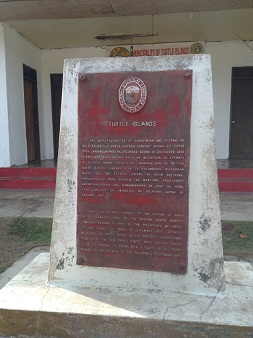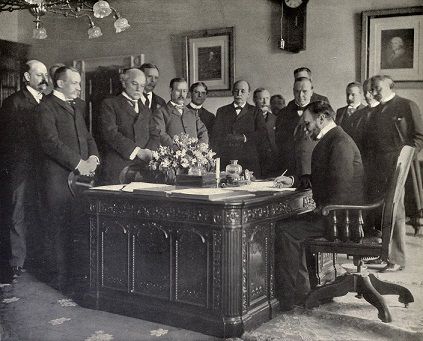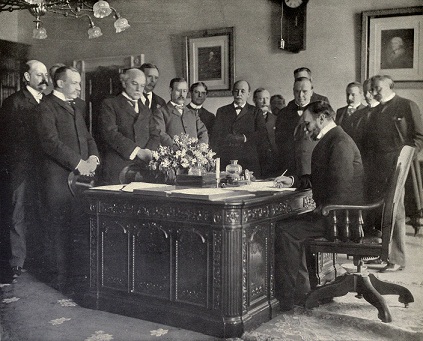By LUZ RIMBAN
(First of two parts)
IF Muslims in the Philippines only had a hand in the way things are run in the country, one of the first things they would do is rewrite mainstream history books to help Filipinos understand and put current issues in context.
Indeed, some of them say, an educational system created by the Americans, coupled with a religious system imposed by the Spaniards, has resulted in a narrative of Philippine history that excludes, among others, the country’s Islamic history.

These islets were leased by the Sultan of Sulu on 22 January 1878 to the British North Borneo Company, became a part of the Philippines by virtue of the Treaty of Paris, 10 December 1898, between Spain and the United States. Lessee continued administering them under the 1932 United States – Great BritainTreaty to be relinquished to the owner upon a year’s notice. Transferred to the Republic of the Philippines, 18 October 1947.
The consequence: Generations upon generations of Filipinos clueless about Muslims and Mindanao, with a bias they inherit from their forebears and pass on to their offspring.
The cluelessness and bias were evident last week as politicians took turns saying their piece about Muslims amid the furor over the Mamasapano, Maguindanao encounter that killed 44 troopers of the Special Action Force, 18 members of the Moro Islamic Liberation Front and at least two civilians.
“Then until now we have these remnants of this conflict and the biases,” Dr. Sukarno Tanggol, chancellor of the Mindanao State University in Iligan City and former Philippine ambassador to Kuwait, said in an interview late last year for a video documentary on autonomy in Mindanao.
The bias was partly the result of centuries in which colonizers pitted Christianized Filipinos against Muslims to conquer resource-rich Mindanao in the classic divide-and-rule strategy.
“That, I think, is one of the reasons why we have this so-called Muslim-Christian antipathy, each one calling the other some negative names,” Tanggol said. “The Moros were then regarded as pirates or brigands, the Christians being referred to as traitors. And this was passed on to succeeding generations.”
To be sure, Mindanao’s history goes beyond the so-called Moro Wars, when sultanates fought Spanish colonizers, and later American forces. Centuries earlier, it was about Mindanao’s original inhabitants, the indigenous tribes, some of which later became Islamized and others not; about the Muslim elite co-opted by governments and politicians in Manila; about campaigns that saw Filipinos from the north taking Moro lands; and about the violence throughout Muslim history that came to a head when Ferdinand Marcos ruled the country.
“Philippine history has to be deconstructed,” said University of the Philippines Institute of Islamic Studies Dean Julkipli Wadi of this complex narrative, pointing out omissions and errors in textbook history.
That history is written mostly from the Western perspective and usually places the country’s starting point at its “discovery” by Ferdinand Magellan in the 16th century. In reality, Wadi said, a vibrant and flourishing civilization shaped by Islam had been in existence at least two centuries earlier in the South, when sultanates traded with the Chinese, Arabs and Hindus, whose influence spread peacefully over the islands.
Some Muslim enclaves had reached Luzon, Wadi said, “so we could not erase the fact that Filipinos have Muslim blood in their veins.”
The aggressive Spanish Army and clergy in the 1500s pacified Northern and Central Philippines in the name of Catholicism, but failed to subdue the South. After close to 400 years of oppressive conquest, Filipinos overthrew Spanish rule, only to have their victory snatched from them by American invaders.
That Mindanao was a separate political entity is clear in historical accounts that say Gen. Emilio Aguinaldo asked his fellow revolutionaries during the Malolos Congress of 1898 for authority to talk to the Sultan of Sulu.
“Aguinaldo was forced to extend what possibly could become a treaty of alliance with the Sulu Sultanate when he proposed the formation of a federation,” Wadi said.
Aguinaldo supposedly sent a letter through his cousin Baldomero Aguinaldo to the Sultan, who is said to have responded, “You have your own history; we have our own history.”
The Malolos Congress turned Aguinaldo down. “It is not improbable that the cultural bias and political neglect by the Christian majority vis-à-vis the Muslim Filipinos during the American regime and during the Republic would not have been possible had the Christian lawyers in the Malolos Congress appreciated Aguinaldo’s vision of a nation,” said former education secretary and University of the Philippines president Onofre D. Corpuz in his book The Roots of the Filipino Nation.
“It is probable, on the other hand, that the Moro National Liberation Front rebellion of the early 1970s was the inevitable bitter fruit of that lack of appreciation,” Corpuz said.

Rather than concede to Filipinos, Spain staged a mock battle at Manila Bay to pretend defeat by the Americans. It was a win-win situation for the two colonial powers. Spain got $20 million in exchange for ceding its colonies—Cuba, Puerto Rico and the Philippines—to the United States under the Treaty of Paris. It was a terrible loss and betrayal of Filipinos and their Muslim brothers.
The Muslims have maintained that Spain had no control over southern Philippines and therefore had no right to cede or sell it to the Americans like they did Cuba and Puerto Rico. “In the first place, Spanish forces in the Philippines had no control over substantial areas in Muslim Mindanao and Sulu,” Wadi said.
“Historically, we know that there was even no plebiscite, no consultation when the Spaniards decided to yield the Philippine archipelago to the Americans through the Treaty of Paris. They did not consult the Moros, and Mindanao was included,” Tanggol said.
“To say the least, the Treaty of Paris was actually illegal from the Moro perspective,” Wadi said.
The Americans launched a brutal pacification campaign all over the islands, and even more brutally among the Muslims. While all this was happening, Americans were negotiating with Muslim leaders and promising them their own government, a promise they failed to keep.
Muslim leaders appealed to the United States government during the American occupation to be excluded from the American-sponsored Philippine Republic that was to be born in 1946. From Sulu, Zamboanga and Dansalan (the old name of Marawi City), Muslim leaders signed declarations asking to either remain under American rule or be declared an independent state. Their pleas were ignored.
“American interference was responsible for the integration of Mindanao and Sulu to the Philippine colonial system, a development that continues to affect Filipinos and Moros,” Wadi said.
“So ever since there was this problem of making Moros or Filipino Muslims truly a part of the Filipino nation,” Tanggol said. (To be concluded)
Read the second of two parts: The roots of the Mindanao strife retraced
